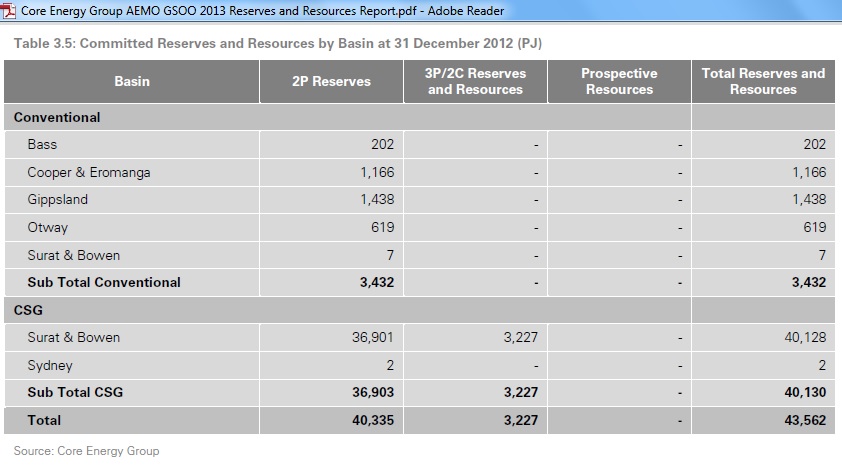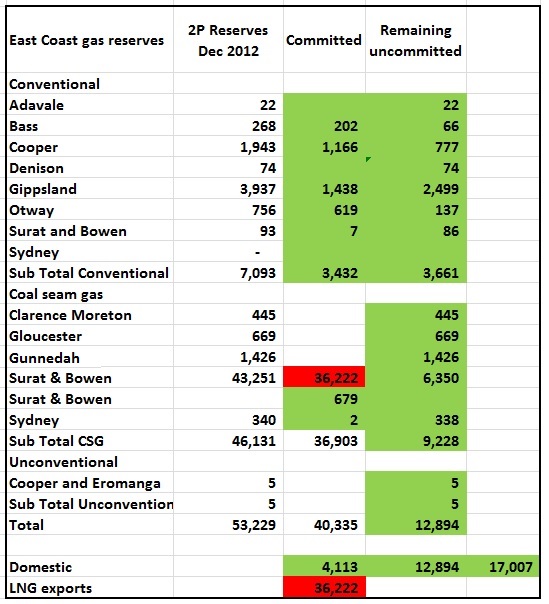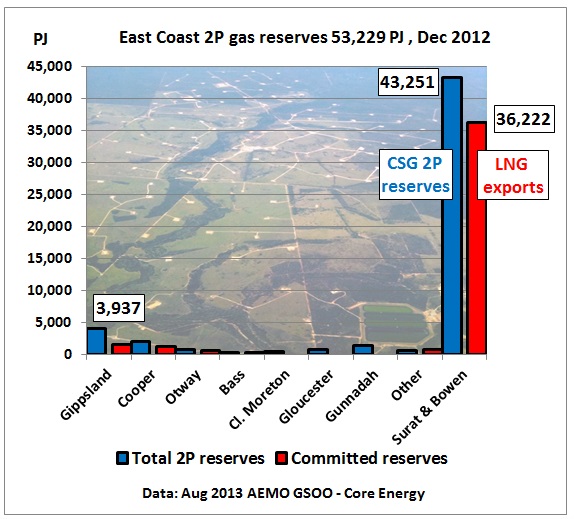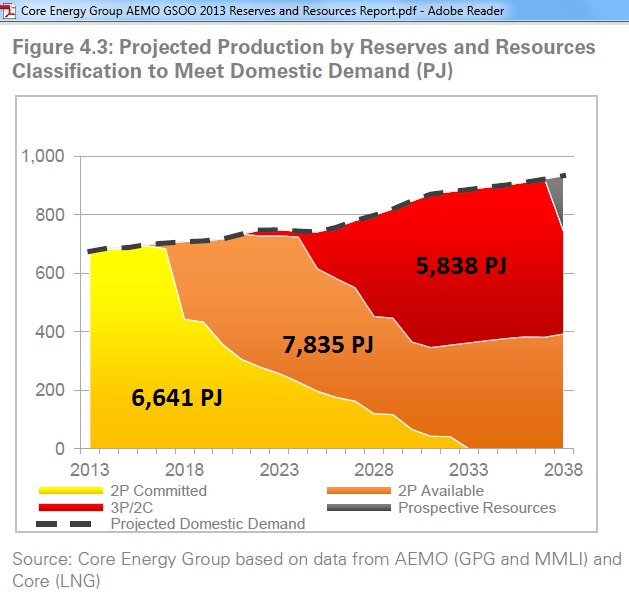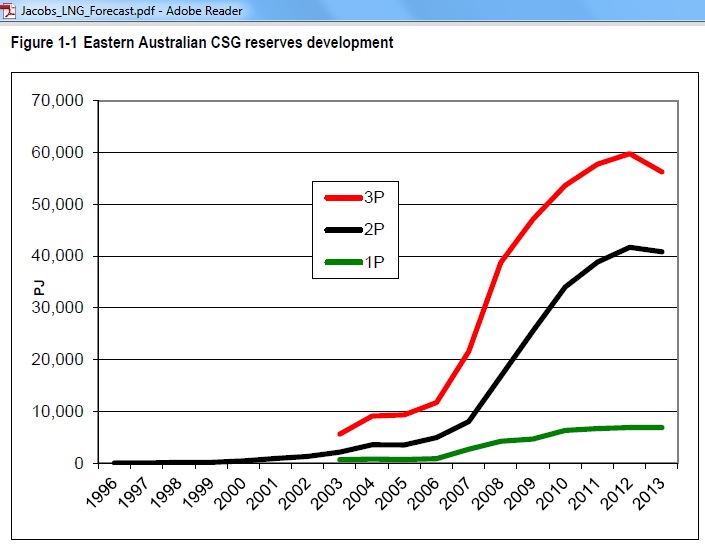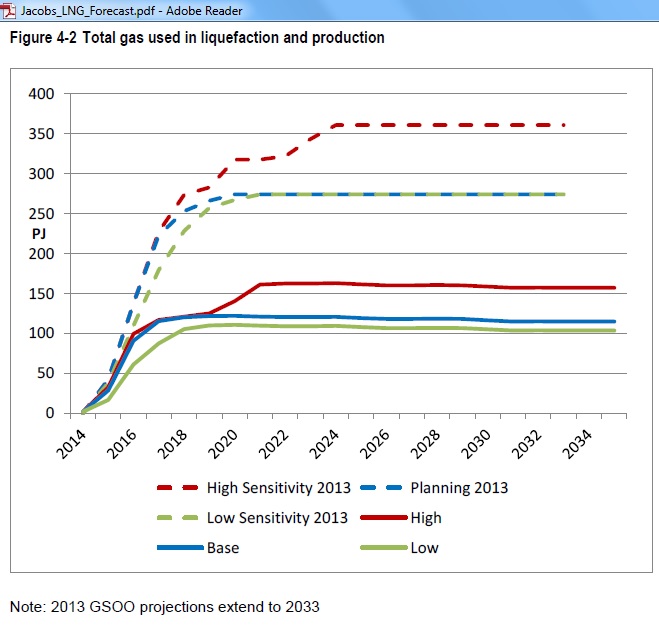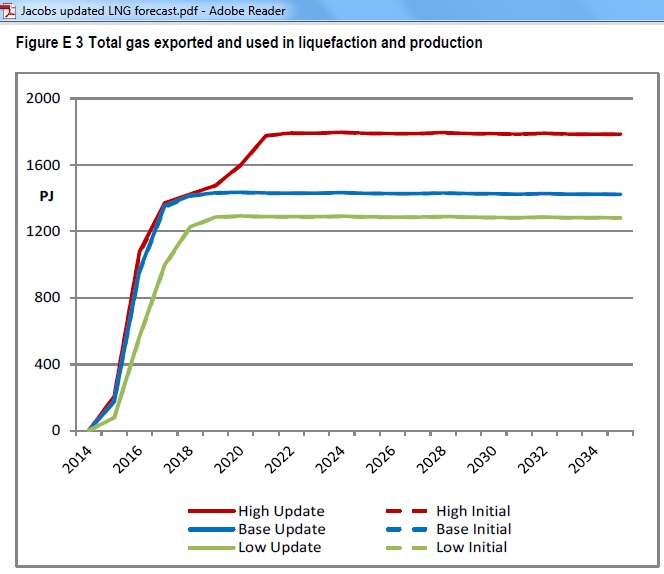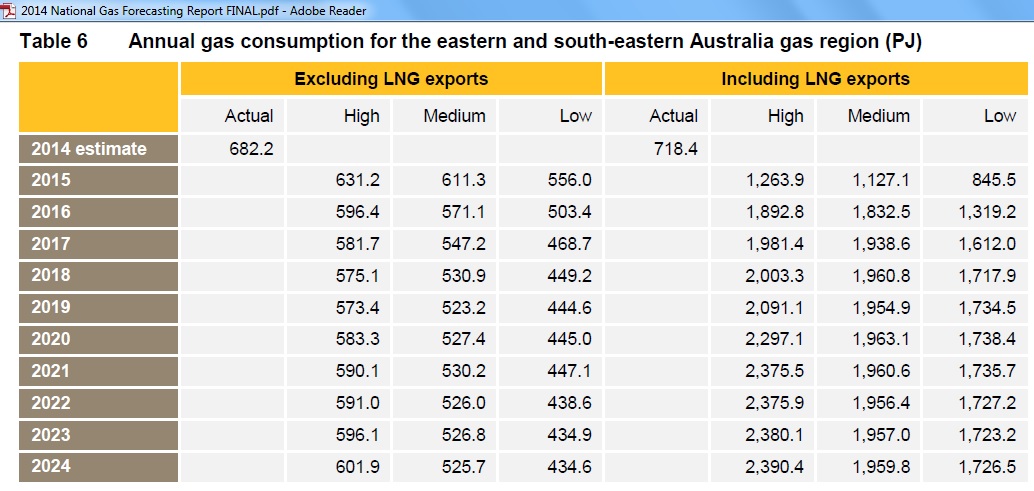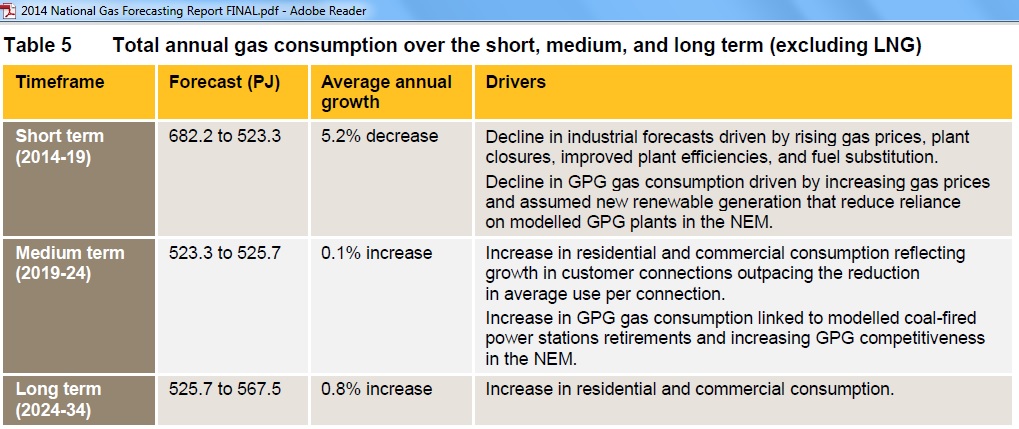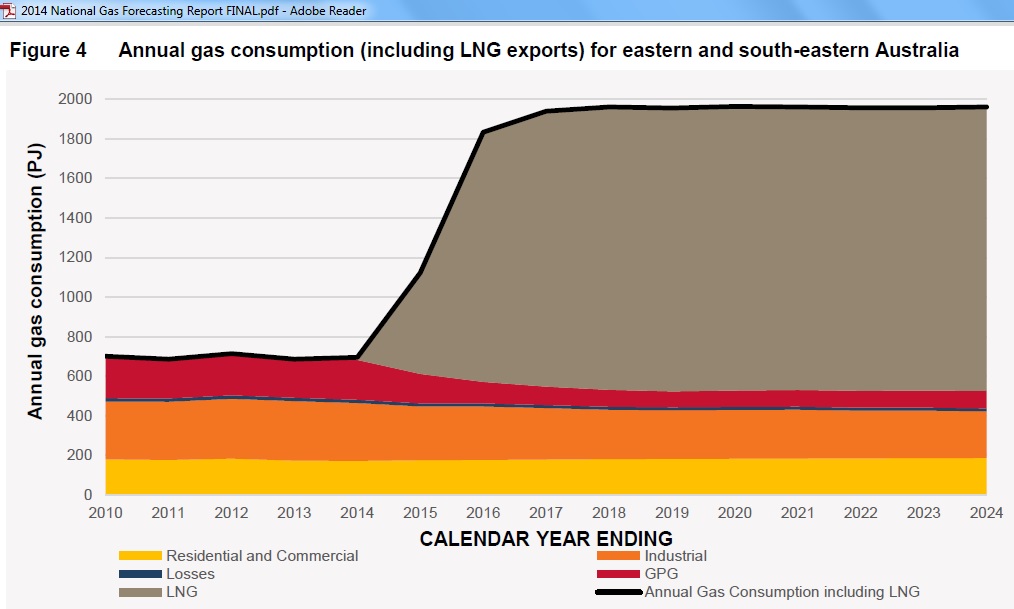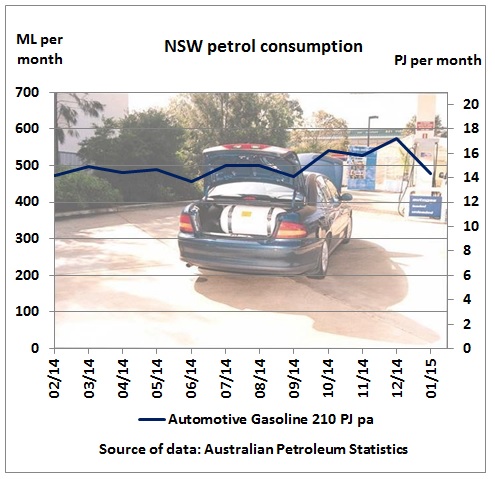Introduction: Credit Suisse reported that there is not enough East coast gas for 3 LNG export terminals at Gladstone, Queensland. If that is the case then it is doubtful whether there will be sufficient gas to replace petrol and diesel by gas as transport fuel
Australia’s LNG market a ‘slow train crash’ says Credit Suisse analyst
17/2/2015
Credit Suisse energy analysts calculate that the three Queensland LNG projects are short of as much as 8800 petajoules of gas reserves to meet their 20-year LNG sales contracts, an amount equivalent to 12 times the annual consumption of gas across Australia excluding Western Australia and the Northern Territory.
http://www.smh.com.au/business/australias-lng-market-a-slow-train-crash-says-credit-suisse-analyst-20150217-13gnh8.html
CSG more trouble than it’s worth for AGL
14/3/2015
Voters are largely ignoring warnings about a looming gas shortage, with domestic gas prices set to double as LNG exports link east coast prices to global ones.
http://www.smh.com.au/business/mining-and-resources/csg-more-trouble-than-its-worth-for-agl-20150313-1421wi.html
Ok, let’s check on East Coast gas reserves
(1) Gas reserve definitions
Gas data for this article are from the Australian Energy Market Operator (AEMO). Neither the latest Gas Statement of Opportunities (GSOO) report from May 2014 nor the National Gas Forecasting Report (NGFR) from December 2014 contains any reserve data by basin so we have to get them from the GSOO 2013 report. Here are the reserve and resource definitions:
The GSOO considers reserves in four tranches:
- · Proven and probable (2P) reserves, indicative of best estimates of commercially viable gas in the ground.
- · Best estimate contingent (2C) resources, indicative of best estimates of gas in the ground that is commercially viable under conditions of increased commodity prices.
- · Proven, probable and possible (3P) reserves, indicative of potentially commercially viable gas in the ground where volumes are less certain than the 2P classification.
- · Prospective resources, indicative of gas that is both uncertain in volume and commercially viable only under increased commodity prices.
http://www.aemo.com.au/Gas/Planning/~/media/Files/Other/planning/gsoo/2013/2013%20GSOO.pdf.ashx
(2) Core Energy Report, August 2013
Current and Projected Gas Reserves and Resources for Eastern and South Eastern Australia
August 2013
AEMO engaged Core Energy to assess gas reserves. Core considered a range of technical, financial and commercial factors in order to develop an estimate of resources having the potential to migrate to a 2P classification over the period to 2038 or within the foreseeable future thereafter. The results are summarised in Table 3.4, 3.5 and 4.1.
.
.
LNG is for 7 trains. Conversion 1,000 PJ = 943 bcf
Let’s put committed and uncommitted 2P reserves from tables 3.4, and 3.5 into one table so that we can see where those 17,007 PJ in table 4.1 come from:
Committed and uncommitted 2P gas reserves.
Green areas denote gas for domestic use. Note that conventional 2P reserves of 7,093 PJ are insufficient to cover domestic demand with a low R/P (reserve/production) ratio of 7,093/650=11 years. 54% of the reserves for domestic use are supposed to come from CSG, for example under rich farming land in the Gunnedah basin. There is stiff resistance against coal mining and CSG in this area.
Let’s put the total 2P reserves by basin into a graph:
2/3 of proved and probable gas reserves on the East Coast are committed for LNG exports
So how are these reserves produced over time? Let’s have a look at the domestic production first, taken from the same Core report:
Fig 4.3 from AEMO GSOO 2013 with reserve numbers inserted by author
Note that the numbers down to the last PJ should not be interpreted as representing a high accuracy. They are only used here to help identifying the corresponding data in the above tables and other graphs.
We can see in Fig 4.3 that
- production from committed 2P reserves drops sharply in 2018
- production from total proven and probable (2P) reserves starts to decline 6 years later in 2024, dropping to half within another 6 years.
- 3P/2C resources (5,838 PJ) which are now uncommercial would have to be “proved up” from 2024 onwards (Cooper, Eromanga, Gippsland), guaranteeing rising gas prices. They exceed slightly the figure of 5,209 PJ given in table 3.4
- total production of 2P and 3P/2C in the graph is 20,314 PJ which exceeds 17,007 PJ reserves from table 4.1
So we keep in mind that there are some inconsistencies between Fig 4.3 and the reserve tables.
All AEMO graphs are from here: http://www.aemo.com.au/Gas/Planning/Gas-Statement-of-Opportunities/~/media/Files/Other/planning/gsoo/2013/Core%20Energy%20Group%20AEMO%20GSOO%202013%20Reserves%20and%20Resources%20Report.pdf.ashx
(3) Jakobs-SKM report on LNG, June 2014
AEMO engaged Jakobs SKM to have a look at LNG projects in Queensland. The report is titled:
Projections of Gas and Electricity Used in LNG
Public Version, 24/6/2014
This is an extract:
Three large projects which are planning to export from Curtis Island, near Gladstone made final investment commitments in 2011 and 2012: QCLNG; GLNG; and APLNG. Their six committed LNG trains, each capable of delivering about 3.9 to 4.5 Mt of LNG per year, are under construction, with first deliveries scheduled from the final quarter of 2014 to 2016. The six trains will use approximately 3,750 PJ each over 20 years, or 28,500 PJ in total.
2.1.4 Gas resource availability
During the period from 2008 to 2011 when CSG reserves were growing rapidly (Figure 1-1), based on published contingent and prospective resources it was projected that this growth rate could continue and may support considerably more than six or eight trains.
Fig 1-1 Note that the CSG 2P reserves of around 40,000 PJ are lower than 46,131 PJ in table 3.4
However since 2011 that reserves growth has reversed, for a number of reasons, and the prospect of further trains is not as bright:
1) During project construction appraisal drilling to prove reserves has given way to development drilling of production wells.
2) Criteria for classifying contingent CSG resources have been tightened by the Society of Petroleum Engineers (SPE).
3) Opposition to CSG development has intensified, particularly in New South Wales, with the result that in the Hunter and Sydney Basins reserves have been declassified and development in other New South Wales basins has slowed down or stopped.
4) Productivity of some fields appears to be below expectations
5) Exploration for CSG in the Galilee Basin has faltered after a number of poor drilling results
6) As a result of the above and the shale gas success story in the United States, the focus of exploration in eastern Australia has moved from CSG to shale gas, with interest mainly in the Cooper Basin because of its well-developed gas gathering and processing infrastructure.
However the shale industry is five to ten years away from demonstrating the economics and reserves necessary to support large-scale production. In particular, the Australian industry does not yet support the competitive drilling and fracking sub-sector needed to reduce costs and at the $A8.30/GJ cost assumed in the 2013 GSOO LNG exports via Gladstone would not be economic
Table 3-5 LNG project reserves by company
The reserves for QCLNG, GLNG and APLNG are around 27,000 PJ while requirements for 6 trains would be 240 PJ x 20 x 6 = 28,800 PJ. Clearly, this is not sufficient. Note also that 36,011 PJ is lower than the 40,000 PJ from Fig 1-1
As a result of this tight reserve situation, the majority of power supply for gas compression which was originally to come from gas, will now come from the grid (coal fired power)
Fig 4.2 Gas demand reduced from 270 PJ to 120 PJ pa by using grid power for compression
So the cancellation of Arrow as a standalone LNG project does not come as a surprise.
Shell shelves plans for Arrow LNG project in Queensland
Jan 30, 2015
Royal Dutch Shell has officially ditched plans for a new $US20 billion-plus ($25.5 billion) liquefied natural gas project in Queensland in a step-up of spending cuts by global majors buckling down for a prolonged downturn in oil prices…..
On the local front, Woodside Petroleum, Santos, Beach Energy and Oil Search have all foreshadowed cuts to investment budgets and costs, as have smaller players as they struggle with the impact of oil prices bumping along near six-year lows….
The comments confirm that the focus of Shell and PetroChina is now on supplying their Arrow gas to one or more of the three LNG projects already under construction or operating in Queensland.
(4) Jakobs report update, August 2014
In August 2014, Jakobs did an update of their June 2014 report with this graph:
Fig E3: Gladstone’s LNG exports at 1,430 PJ pa (base case) after ramp-up
The cumulative production for the base (medium) case is 28,500 PJ over 20 years (6 LNG trains at 238 PJ pa each).
(5) National Gas Forecasting Report, December 2014
The National Gas Forecasting Report (NGFR) December 2014 uses Jakob’s data in following table, bringing domestic demand and LNG requirements together.
For the domestic demand, let’s do a comparison with Fig 4.3 from 2013
Superimposition Fig 4.3 (areas, GSOO 2013) and table 6 (lines, NGFR 2014)
The cumulative production 2013-2038 of the medium forecast (black line) comes to 14,594 PJ, close to the current 2P reserves from Fig 4.3 (6,641 + 7,835 = 14,476 PJ). But production cannot drop to zero in 2038 so the medium forecast assumes that those 5,209 PJ of 3P/2C resources are turned to additional 2P reserves which will realistically already happen long before the current 2P reserves are exhausted. The theoretical R/P (reserve/production) ratio in 2038 would then be just 9 years. Whether prospective resources from table 3.4 can be turned into reserves is purely speculative.
So why does the NGFR lower the domestic gas consumption forecast? Here are the reasons:
Industrial decline. Fantastic, if domestic demand is lower, then more gas can be exported. Out they go, these LNG ships. Where are the efforts of the government to replace declining industries with growing industries for the development of rail and renewable industries?
Fig 4 NGFR domestic demand and LNG requirements
Extending the lines horizontally to 2035 gives 29,000 PJ for 6 LNG trains. GPG = gas powered generation (no increasing role planned for gas to back up intermittency of renewable energies)
(6) Gas as transport fuel
The following graphs show NSW petrol and diesel consumption of the last 12 months, in ML per month. The right hand scale depicts the energy equivalent in PJ so that it can be compared to gas reserves
NSW petrol consumption
NSW diesel consumption (includes use in mining)
Theoretical requirements for all East Coast States:
Petrol in last 12 months: 16.2 billion litres @ 35 MJ/L = 570 PJ pa
Diesel in last 12 months: 16.8 billion litres @ 36.4 MJ/L = 590 PJ pa
The total energy equivalent is 1,160 PJ / 240 PJ = 5 LNG trains
Note that well-to-wheel calculations have not been included so adjustments would have to be made. This goes beyond the scope of this article. What matters here is to show the magnitude of Queensland’s LNG exports.
Summary and conclusion:
On the East coast, as of Dec 2012, there were only 7,093 PJ of conventional 2P gas reserves and 5,209 PJ of conventional 3P/2C resources available. Assuming that the latter can be turned into 2P reserves (at higher gas prices) this would only be 84% of reserves required for the domestic gas consumption until 2038.
Given that most CSG reserves are exported, the domestic gas supply situation will be tight at the end of a 20 year period. The gas industry will push for further CSG or even shale gas exploration and development at huge costs to the environment and climate (CO2 from gas is actually stacked on top of CO2 from coal – without really replacing coal).
Current domestic gas demand does not include gas as transport fuel which would be in the order of 5 LNG trains. It is a tragedy that Australia’s East coast damages its agricultural and forest land while not even benefitting from using this precious energy to get away from oil and capture its value.
The problem goes back to the Howard years when LNG exports from the North/West coast were approved without building a West-East gas pipeline. How much such a pipeline would cost now (and what the resulting gas prices would be) is another matter altogether. In any case it is an untested assumption to believe that the so called abundance of gas in Australia will make a transition from oil to gas easy.
This has enormous implications for infrastructure planning where government departments, consultants, banks and other investors assume that there will be other energies like gas available to replace oil when that need arises.
Appendix
Slide from the presentation “Coal seam gas: intersections with agriculture and water resource management” by Peter Stone (Gas Industry Social and Environmental Research Alliance)
http://www.gisera.org.au/publications/presentations/20120307-abares-web.pdf
Video part 1
https://www.youtube.com/watch?v=0EojWYUIgFE
Video part 2
https://www.youtube.com/watch?v=cDnBcBhkwbg
The title “How much land will they share” should actually read “Interference of CSG with agriculture”. Also note that land requirements have to be doubled if old wells are included over the whole life time of the projects.
Previous posts:
Use the category “Australian natural gas” on the right side menu

